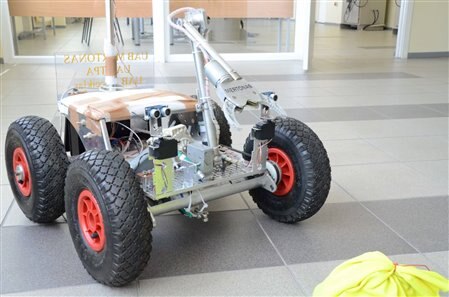Hi all,
To say that I am new to robotics would be an understatement. My first "mini project" is putting a camcorder on a turntable-style bearing. The turntable has (will have) wires fed through the center, so I would like to limit the movement of the turntable to 360 degrees in order to avoid twisting up the wires. I would also like to be able to find out the exact angle in which the camcorder is pointing so that I can chart the angle in an application. From the searches I've done, it seems like the right tool is a absolute position encoder. Am I on the right track? Can anyone recommend a good product that I could use in conjunction with a turntable?
Thanks!







